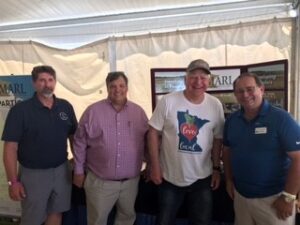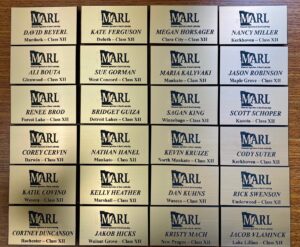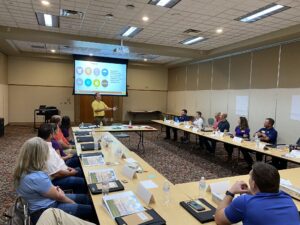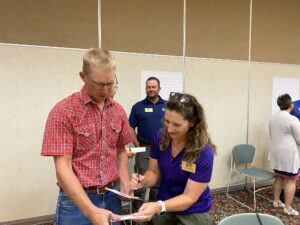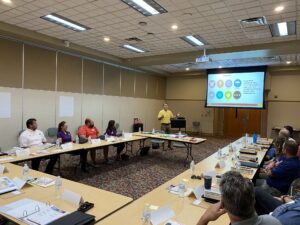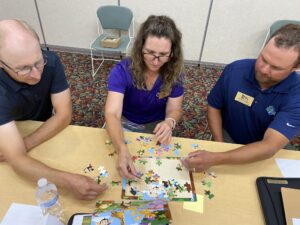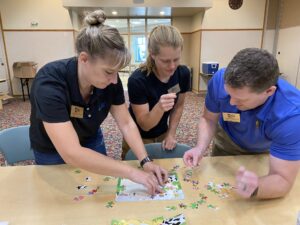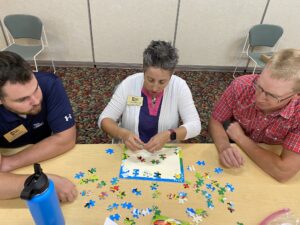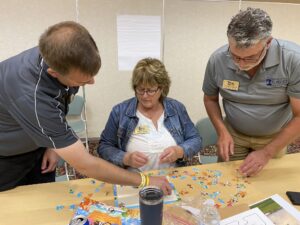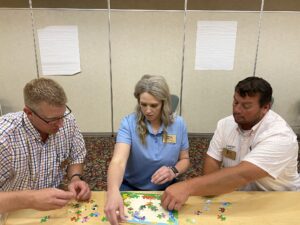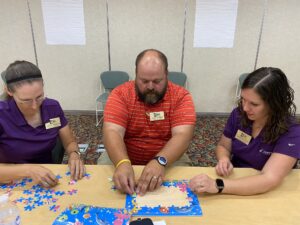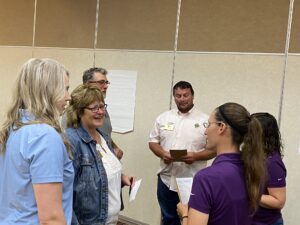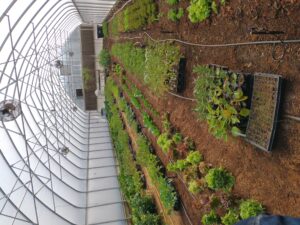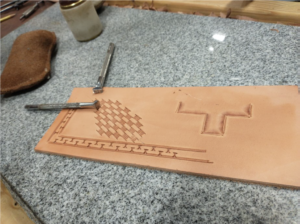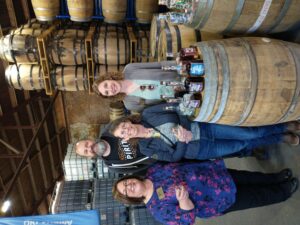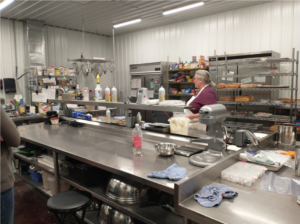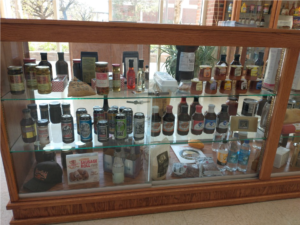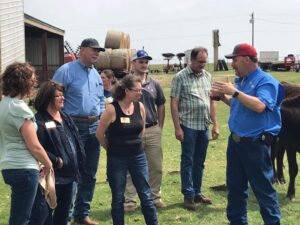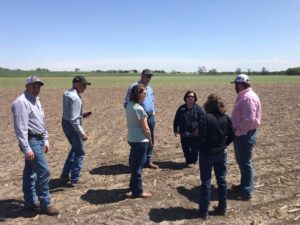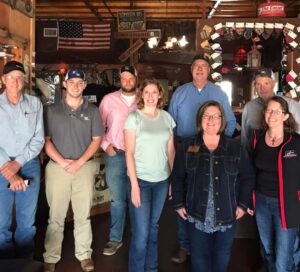After 20 months of learning and growing together, the members of Class XI completed their journey on June 22 and 23 in St. Cloud. A celebratory seminar with many guests, reflections, looking forward, and paying it forward. A last time to be together with all.
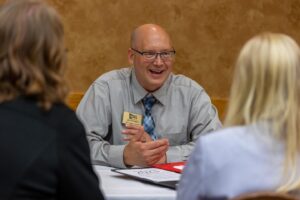
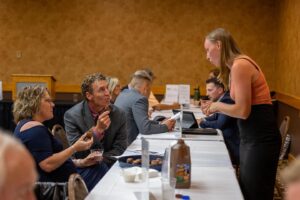
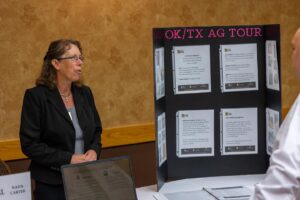
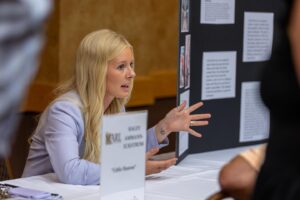
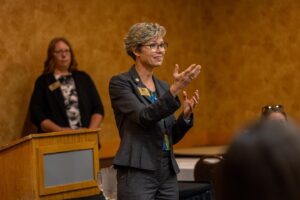
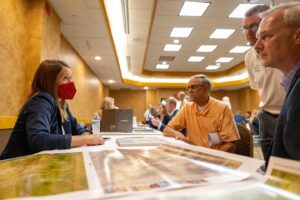
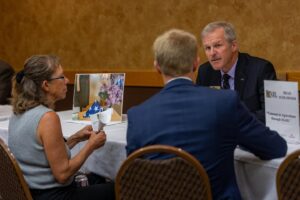
Members, spouses and board directors started the 2-day event with introductions and lunch. The members then set up their capstone exhibits, and took turns throughout the afternoon to present on their projects. A booklet with a compilation of their capstone project reports was shared to take home. During the capstone exhibits, spouses were invited to join a tour of Munsinger Gardens in St. Cloud.
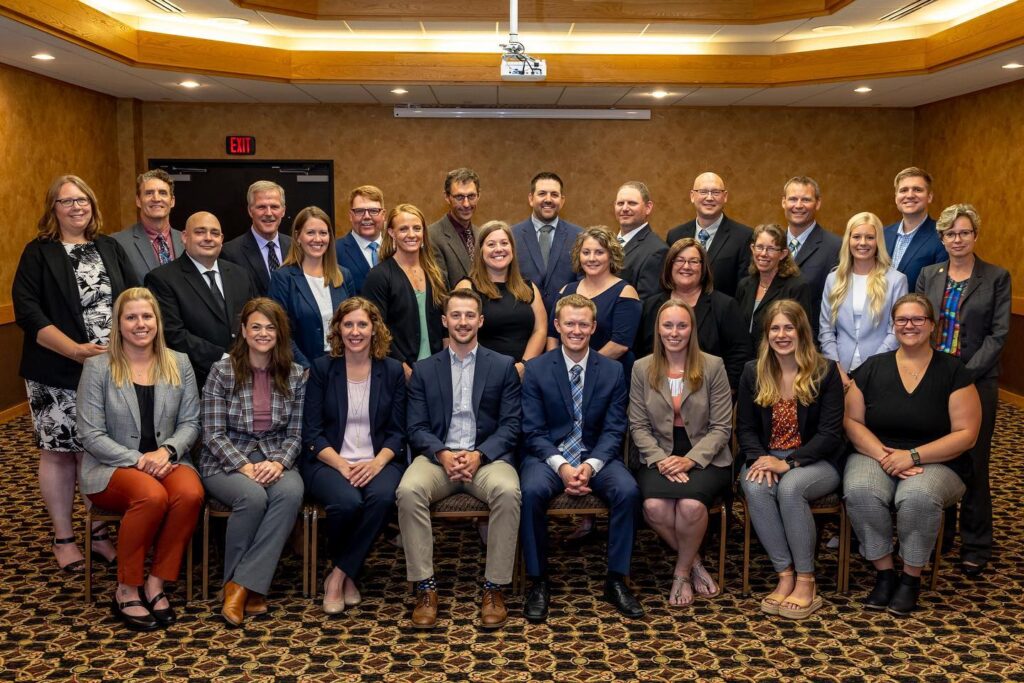
SMSU’s photographer Adam Henning captured a last official group photo of the cohort and staff.
An auction organized by Quyntin Brandt and Jesse Pabst was organized that evening, with a live auction in the room, and a silent auction available on-site and online. Banquet emcees and maple syrup tappers Roger Imdieke (Class V) and Doug Hoffbauer (Class VI) invited a select group of leaders to speak, and Mary Kay Delvo (Class IX) to sing her “MARL Invocation”. Retired directors of the MARL board over the last four years, were acknowledged and thanked for their service. Those who were present received a true Minnesota-shaped plaque. Alumni Leadership Fellows who mentored peer learning groups (formerly known as EQi groups) were acknowledged as well. Natasha Mortenson (Class IX), Chelsea Russell (Class VII), Shelly Schell (Class VI), Steve Olson (Class II), Ricky Sommers (Class I), Jill Resler (Class VI) and Mary Kay Delvo (Class IX) were all thanked for their service in this new enhancement of the MARL program. Finally, all members received their certificate of completion at the graduation ceremony.
Thanks to class members, alumni and friends, the auction was a great success. This will help pay it forward to the next cohort: Class XII.
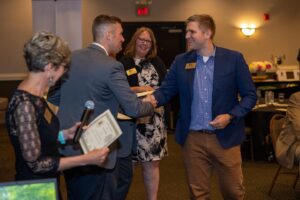
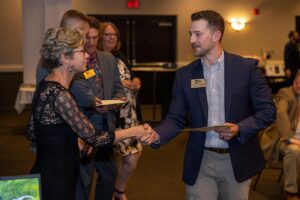
After singing a double birthday song for members Steven Marsh and Brittany Ullrich, Mr. Greg Page, former CEO of Cargill, kicked off the next morning for Class XI. Mr. Page shared his personal story, growing up in Bottineau, ND and his career with Cargill starting in dairy and beef. The leadership lessons were plentiful, and even included some mathematical formulas. Nuggets about training curiosity, growing by asking for feedback from team members, influencing, and trust. Explanations are better than answers. Our gratitude to Mr. Page for volunteering his time, presenting and answering our questions.
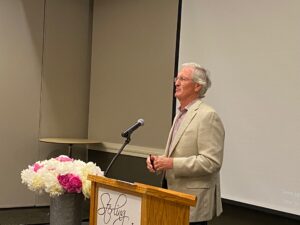
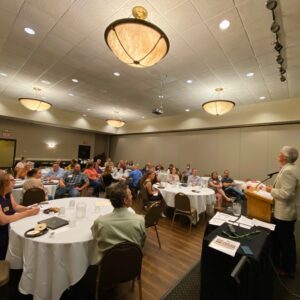
The cohort split in their Peer Learning Circles and spent 30 minutes reflecting on their experience, and looking forward. After electing two liaisons to represent Class XII on the MARL Board: Chelsea Honnette and Roy Wookey, it was time for the final wrap-up. Written evaluations, a short discussion how to stay in touch, and a final “Golden Nugget” sharing circle. Song, poetry, words, laughs and tears expressed everyone’s individual message.
A special thanks to our spouses/significant others, for their support in the journey. Margo Wookey, Roy Wookey’s wife, shared a shout out during the Golden Nuggets. Thank you!
I have known all of you less than 24 hours now as a significant other of Roy’s MARL “family” here is humorous glance I composed of my albeit tiny glimpse of MARL class II…. I mean XI!
Marl XI Grad Reflections 2022
Margo Wookey
Katie is going overseas…
She wears a mask for risk to appease!
Shannon has a giant laugh!
Holly’s “fine”—so says her hat…
Cheryal brought engraved in glass…
A MARL whisky craft of class!
Austin is a brand new dad, and
I hear his airport stretching skills are pretty mad!
Banquet laughs with Rick were funny…
Sitting by his ‘hunny bunny’!
Charlie’s voice is very deep…
Erik bought all those things to keep!
Steven farms a wild rice moat,
Chelsea now has baby goats!
Celine dion is at the mic…
Nope that’s Olga with similar pipes!
‘DannaWhite’ and half a hog…
With empty promises of choices from top to bottom like a log!
Without glasses Roy says cheese!
Toby networks the room with ease…
Brad and LouAnn six second kiss…
Good wisdom younger couples should not miss!
Christy prepares certificates…
For Quyntin to makes his grand entrance!
Quito roads were very narrow…
Now QB’s in a wheel barrow!
Haley as a purple blazer while
Jesse emc’s the fundraiser…
Brittany’s birthday is today!
Jessica’s blindness did not stay…
Dylan likes to room with Roy…
And always trying me to employ!
Joel has a brand new purse…
Gift cards a plenty in that murse!
Elizabeth sure knows her cows..
Fernando ate so many Guinea pigs -we’ll never know how!
Deborah’s heart is for family dairy…
Sarah is right now having a baby!
Amy teaches girls and boys…
Kim had a bouncing bundle of joy!
Kaelyn has a marketing way!
Jana isn’t here today…
Nada knew Roy as a little guy…
and I spose it’s time to say goodbye!
All good things must come to an end,
Thanks to all for a memorable weekend…
Take all that you’ve learned wherever you roam..
And start by leading well, right in your home.
